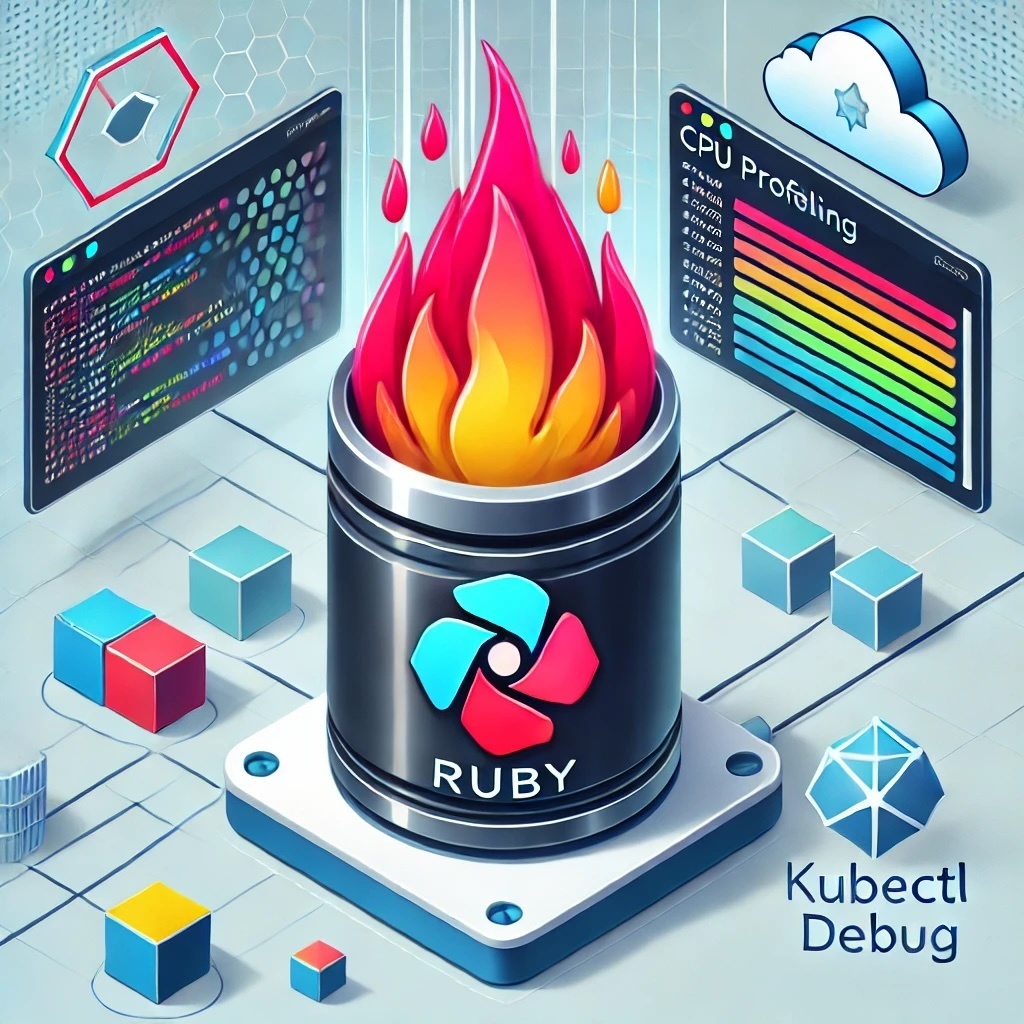
CPU Profiling a Ruby Application in Kubernetes
TL;DR In this article, I’ll guide you through the steps to obtain CPU profiling traces from a running container in Kubernetes.
Preparation
I won’t delve into the purpose of CPU profiling here but will focus on the instructions. For profiling, I’ll use rbspy. I initially tried Pyroscope, but encountered issues with reporting data in a local Ruby example. Additionally, its Ruby gem support seemed outdated, so I switched back to rbspy.
Profiling containers isn’t straightforward - it requires some preparatory steps, including updating Pod security settings to enable SYS_PTRACE.
Updating Pod Security Settings
Here’s an example of the changes needed in the deployment configuration:
containers:
- name: web
image: docker.io/rails/rails:master
command:
- bundle
- exec
- rails
- server
+ securityContext:
+ capabilities:
+ add:
+ - SYS_PTRACE
Once deployed, you can begin debugging. By default, containers run as non-root users and often lack the required profiling tools, which limits the usefulness of kubectl exec1. Instead, you can use kubectl debug2 to hijack a node or pod with a custom container running in privileged mode 3.
Using kubectl debug
The kubectl debug command can add a container to the node or attach it to a target pod:
$ kubectl debug -it web-84cd66cb44-n82jt --image=alpine --target=web
$ kubectl debug node/backend4x-gw73h -it --image=alpine
There is a container image exists for rbspy and could be used like:
$ kubectl debug -it web-84cd66cb44-n82jt -c debugger --image=rbspy/rbspy:0.27.0-musl --target=web --profile=sysadmin
However, this approach didn’t work well in my Kubernetes cluster, and I didn’t have time to investigate further. Consider this a homework assignment for you.
An Alternative Approach
Here’s what I did instead:
$ kubectl debug -it web-84cd66cb44-n82jt -c debugger --image=alpine --target=web --profile=sysadmin
# wget -qO- https://github.com/rbspy/rbspy/releases/download/v0.27.0/rbspy-x86_64-unknown-linux-musl.tar.gz | tar xvz
# mv rbspy-x86_64-unknown-linux-musl/rbspy /usr/bin/rbspy
Even after adding SYS_PTRACE, I couldn’t get rbspy to work without adding --profile=sysadmin. Additionally, using -c debugger assigns a static container name, which simplifies automation.
Recording the Profile
Once rbspy is installed, you’re ready to start profiling. Most applications run with PID 1, but if other scripts are running in the container, you may need to identify the correct PID using ps ax. After identifying the PID, start collecting data (replace 1 with PID):
# rbspy record --pid 1 --raw-file /raw.gz --format flamegraph -f /flamegraph.svg
Exporting the Data
Once profiling is complete, you need to copy the reports from the container. Use kubectl cp4 to achieve this:
$ kubectl cp -c debugger web-84cd66cb44-n82jt:/flamegraph.svg flamegraph.svg
$ kubectl cp -c debugger web-84cd66cb44-n82jt:/raw.gz raw.gz
Generating Reports
While you already have flamegraph.svg, you can generate other formats, such as speedscope, from the raw data:
$ rbspy report -f speedscope -i raw.gz -o speedscope.out
You can then upload the file to speedscope.app to view the flamegraph over time.

Summary
rbspy simplifies profiling for running applications. However, in cloud environments with distributed loads, a more automated solution like continuous profiling (e.g., Pyroscope) is preferable. Currently, an external memory profiler isn’t available, but the Ruby community has introduced a new tool, vernier, which could be useful for continuous profiling.